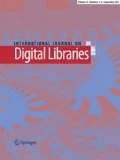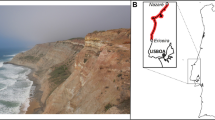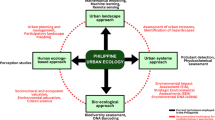Abstract
In order to respect the good practices in archaeology disseminated by the MASA Consortium (Archaeologists and Archaeological Sites Memories), the Laboratoire Archéologie et Territoires (Tours, France) wished to evaluate the progress of ArSol database (Soil Archives), its field data management database, with regard to the FAIR principles or the Five-Star Linked Open Data. The work undertaken to achieve compliance with these precepts has shown that it is also necessary to ensure the relevance and reliability of the published data. For data to be reusable, it seems essential to ensure traceability. Various tools’ set-up for the ArSol database makes it possible to ensure this traceability from the field recording, through its exploitation, to the publication of the results of the excavation. The traceability of data, to ensure their quality in terms of reliability and relevance, is an aspect that is fortunately already taken into account in the ArSol database and that complements satisfactorily the FAIR principles requirements.








Similar content being viewed by others
References
Berners-Lee Tim: Linked data (2006). https://www.w3.org/DesignIssues/LinkedData. Accessed 25 Jan. 2019
FAIR Principles, FORCE11. https://www.force11.org/group/fairgroup/fairprinciples. Accessed 25 Jan. 2019
Gardin, J.-C.: Archaeological Constructs: An Aspect of Theoretical Archaeology. Cambridge University Press, Cambridge (1980)
Gardin, J.-C., Guillaume, O., Herman, P.Q., Hesnard, A., Lagrange, M.-S., Renaud, M., Zadora-Rio, E.: Systèmes Experts et Sciences Humaines: Le cas de l’ARCHÉOLOGIE. Eyrolles, Paris (1987)
Galinié, H: Les clefs du sol (1976–1977), Les petits cahiers d’Anatole 25, November (2013). http://citeres.univ-tours.fr/doc/lat/pecada/pecada_25.pdf. Accessed 25 Jan. 2019
Galinié, H., Husi, P., Rodier, X., Theureau, C., Zadora-Rio, E.: ARSOL. La chaine de gestion des données de fouilles du Laboratoire Archéologie et Territoires, Les petits cahiers d’Anatole 17, mai (2005). http://citeres.univ-tours.fr/doc/lat/pecada/F2_17.pdf. Accessed 25 Jan. 2019
Husi, P., Rodier, X.: ArSol: an archaeological data processing system. In: Erzsébet, J., Redő, F., Szeverényi, V. (dir.) On the Road to Reconstructing the Past, Proceedings of the 36th CAA Conference, Budapest, 2–6 April 2008, pp. 86–92 (2011). https://proceedings.caaconference.org/files/2008/CD36_Husi_Rodier_CAA2008.pdf. Accessed 25 Jan. 2019
Linked Data Finland: Living laboratory data service for the semantic web. http://www.ldf.fi/. Accessed 17 June 2019
Marlet, O., Curet, S., Rodier, X., Bouchou-Markhoff, B.: Using CIDOC CRM for dynamically querying ArSol, a relational database, from the semantic web. In: Campana, S., Scopigno, R., Carpentiero, G., Cirillo, M. (eds.) CAA2015 Keep the Revolution Going, Proceedings of the 43rd Annual CAA Conference, Sienna, 30 March–3 April 2015, Archaeopress Archaeology, pp. 241–250 (2016)
Marlet, O., Francart, T., Markhoff, B., Rodier, X.: OpenArchaeo for usable semantic interoperability. In: Poggi A. (ed.) Proceedings of the 1st International Workshop on Open Data and Ontologies for Cultural Heritage (Rome, Italy, June 3, 2019), Central Europe Workshop Proceedings, vol. 2375, pp. 5–14 (2019)
Holmen, J., Ore, C.-E.S., Eide, Ø.: Documenting Two Histories at Once: Digging into Archaeology, vol. 1227, pp. 221–224, Oxford. ISSN: 0143-3059 (2004). http://www.edd.uio.no/artiklar/arkeologi/documenting%20two%20histories.html. Accessed 17 June 2019
Bellanger, L., Husi, P.: Statistical tool for dating and interpreting archaeological contexts using pottery. J. Archaeol. Sci. 39(4), 777–790 (2012). https://doi.org/10.1016/j.jas.2011.06.031
Bellanger, L., Husi, P., Tomassone, R.: Statistical aspects of pottery quantification for dating some archaeological contexts. Archaeometry 48, 169–183 (2006)
ICERAMM: Information sur la Céramique Médiévale et Moderne. http://iceramm.univ-tours.fr/. Accessed 25 Jan. 2019
Buard, P.-Y., Zadora-Rio, E.: Publishing an archaeological excavation report in a logicist workflow. In: Open Open Open. The Rise of Open Scientific Publishing and the Archaeological Discipline: Managing the paradigm Shift, Proceedings of the 46th Annual Conference on Computer Applications and Quantitative Methods in Archaeology. Archaeopress, Oxford (2019)
Roux, V., Aussenac-Gilles, N.: Knowledge basis and query tools for a better cumulativity in the field of archaeology: the Arkeotek project. In: CAA 2011, Fusion of Cultures. Proceedings of the 38th Annual Conference on Computer Applications and Quantitative Methods in Archaeology, Granada, Spain, April 2010, Archaeopress, pp. 267–272 (2013). http://ceur-ws.org/Vol-2375/paper1.pdf. Accessed 17 June 2019
Marlet, O., et al.: The archaeological excavation report of Rigny: an example of an interoperable logicist publication. Heritage 2(1), 761–773 (2019). https://doi.org/10.3390/heritage2010049
Stead, S., Doerr, M.: CRMinf: the argumentation model. An extension of CIDOC-CRM to support argumentation, Version 0.7 (2015). https://www.ics.forth.gr/isl/CRMext/CRMinf/docs/CRMinf-0.7.pdf. Accessed 17 June 2019
Acknowledgements
We would like to thank the MASA Consortium of the TGIR Huma-Num and the H2020 ARIADNEplus programme, a Project funded by the European Commission under the H2020 Programme, Contract No. H2020-INFRAIA-2018-1-823914.
Author information
Authors and Affiliations
Corresponding author
Additional information
Publisher's Note
Springer Nature remains neutral with regard to jurisdictional claims in published maps and institutional affiliations.
Rights and permissions
About this article
Cite this article
Marlet, O., Rodier, X. A way to express the reliability of archaeological data: data traceability at the Laboratoire Archéologie et Territoires (Tours, France). Int J Digit Libr 22, 257–266 (2021). https://doi.org/10.1007/s00799-019-00274-3
Received:
Revised:
Accepted:
Published:
Issue Date:
DOI: https://doi.org/10.1007/s00799-019-00274-3




